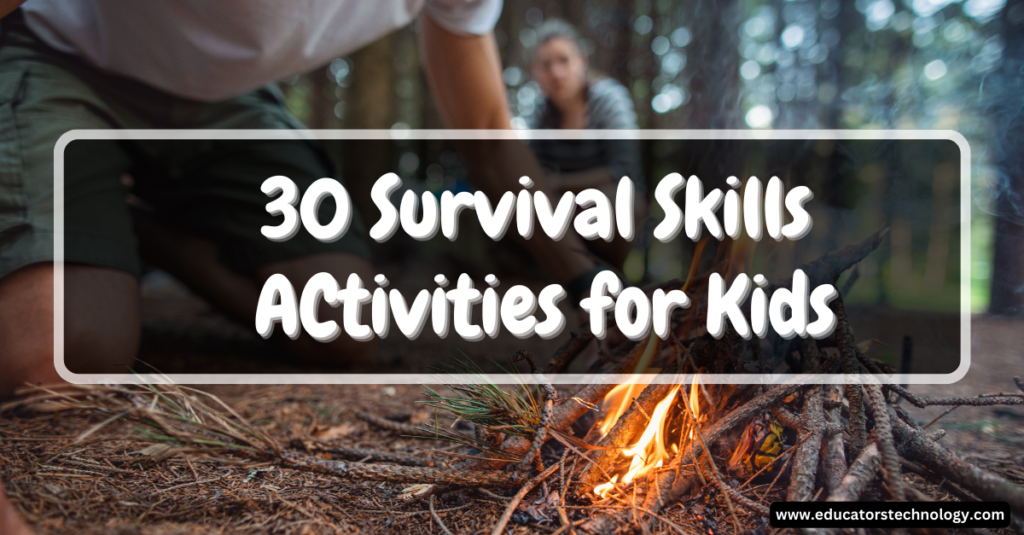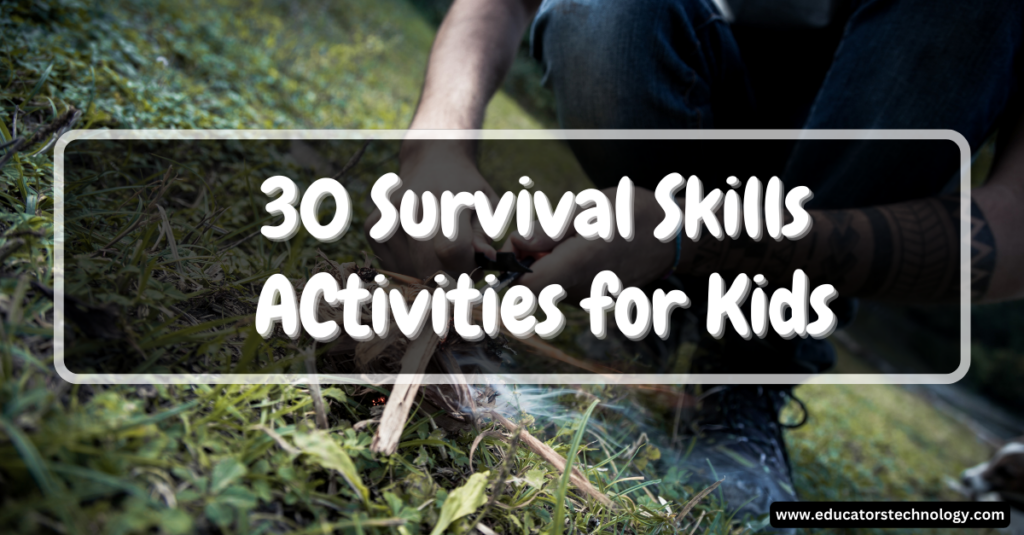TechGuruindia
Member
From the cozy confines of the classroom to the unbounded embrace of the great outdoors, my journey as an educator has traversed diverse landscapes. Each step has brought a wealth of learning, not just for the young minds I have been privileged to guide, but also for me.

In each laugh of discovery, each spark of curiosity, I’ve seen a reaffirmation of why I chose this path – the exhilaration of learning, the joy of growing, the adventure of stepping into the unknown.
While my forte lies in language teaching, I have always been fascinated by the raw excitement and zest that children exhibit when they engage with nature. The hands-on experience of exploring, creating, and discovering infuses learning with a tangible, dynamic quality that is incredibly impactful.
There is something extraordinarily rewarding about watching children’s eyes light up as they learn to set up a tent for the first time, or navigate their way using a compass and a map.
As the days grow longer and the air fills with the familiar warmth of summer, I am excited to share with you a compilation of survival skills activities for summer camp, most of these skills have already been included in my post. Each of these activities has been carefully chosen to offer a balanced mix of fun, learning, and practical survival skills.
From building a campfire and learning about local flora to understanding basic first aid and navigating the stars, these activities are bound to make the upcoming summer camp a memorable, enriching experience for your young adventurers.
[Related: ]
Here are 30 survival skills activities that could be suitable for children, given proper supervision and safety measures:

As educators, it’s important for us to create environments where learning extends beyond the traditional classroom setup. With these hands-on activities, we’re teaching our children to be adaptable, resilient, and resourceful. Whether they find themselves on a school camping trip or are simply curious about the world around them, these survival skills will serve as practical tools for their exploration.
Remember, the goal of teaching these survival skills to children isn’t to alarm them, but to empower them. It’s about giving them confidence and competence, letting them know they are capable of handling various situations. So, here’s to raising a generation of kids who are not only tech-savvy but also nature-smart, well-rounded individuals ready to face whatever adventure life may present!
The post appeared first on .

In each laugh of discovery, each spark of curiosity, I’ve seen a reaffirmation of why I chose this path – the exhilaration of learning, the joy of growing, the adventure of stepping into the unknown.
While my forte lies in language teaching, I have always been fascinated by the raw excitement and zest that children exhibit when they engage with nature. The hands-on experience of exploring, creating, and discovering infuses learning with a tangible, dynamic quality that is incredibly impactful.
There is something extraordinarily rewarding about watching children’s eyes light up as they learn to set up a tent for the first time, or navigate their way using a compass and a map.
As the days grow longer and the air fills with the familiar warmth of summer, I am excited to share with you a compilation of survival skills activities for summer camp, most of these skills have already been included in my post. Each of these activities has been carefully chosen to offer a balanced mix of fun, learning, and practical survival skills.
From building a campfire and learning about local flora to understanding basic first aid and navigating the stars, these activities are bound to make the upcoming summer camp a memorable, enriching experience for your young adventurers.
[Related: ]
Survival Skills Activities for Kids
Here are 30 survival skills activities that could be suitable for children, given proper supervision and safety measures:

- Tent Setting: Teach children how to set up a tent from scratch. This is a fundamental camping skill and promotes teamwork and problem-solving.
- Fire Building: Under strict supervision, teach kids how to safely build and extinguish a campfire. Discuss fire safety rules in detail.
- Cooking Outdoors: Teach the basics of cooking simple meals outdoors, like roasting hot dogs or marshmallows, or cooking beans over a campfire.
- Knot Tying: Practice different kinds of knots and discuss when each type would be used.
- Map Reading and Compass Navigation: Teach kids how to read a map and use a compass, then let them navigate through a known area.
- Basic First Aid: Teach children about handling minor injuries, such as cuts and scrapes, as well as what to do in case of more serious emergencies.
- Plant Identification: Learn about local flora and which plants are safe to touch or consume and which aren’t.
- Water Purification: Teach methods of water purification and explain why it’s necessary when unsure of a water source’s safety.
- Signaling for Help: Cover basic distress signals, including whistle signals, ground-to-air signals, and flashlight or mirror signals.
- Emergency Shelter Building: Teach children how to build a simple emergency shelter using natural materials or items like tarps or emergency blankets.
- Wildlife Awareness: Discuss local wildlife, safety around animals, and how to respond to potentially dangerous encounters.
- Hiking Safety: Go over the rules of safe hiking, including staying on the trail, hiking in groups, and what to do if lost.
- Fishing Basics: If near a body of water, teach children basic fishing techniques, including catch and release.
- Weather Awareness: Teach children how to read the sky for basic weather prediction during outdoor activities.
- Trail Marking: Teach how to use natural materials to mark a trail and ensure they can find their way back.
- Survival Swim: Teach swimming techniques specifically geared towards survival, such as treading water and floatation techniques.
- Basic Tool Safety: Teach children about basic tools like a multi-tool or Swiss Army Knife and their safe usage.
- Star Navigation: Introduce children to basic celestial navigation techniques using prominent constellations.
- Leave No Trace Principles: Educate about the importance of leaving nature undisturbed for future generations to enjoy.
- Basic Wilderness Survival Scenarios: Set up monitored situations where children can use their new skills to “survive” in the wild. It could be a day-long adventure or an overnight campout.
- Rope Making: Teach children how to make their own rope from natural materials. This can be useful for various survival needs.
- Foraging: Teach kids how to identify edible berries, nuts, and plants. Make sure they understand the risks of eating unknown plants and berries and that they should always ask an adult first.
- Camouflage Techniques: Teach kids how to use natural materials to blend into the environment, useful for both survival and games.
- Fire Safety: Educate kids on how to safely extinguish a fire and stress the importance of not leaving a fire unattended.
- Basic Orienteering: Teach children how to navigate using only a map and compass, enhancing their ability to understand geographical direction.
- Flashlight Signaling: Teach children how to use a flashlight to send Morse code messages, an important signaling method in survival situations.
- Shelter Insulation: Show kids how to insulate a shelter using natural materials to protect against cold weather conditions.
- Basic Cooking: Teach children how to cook basic survival food, such as canned beans or soup over an open fire.
- Rainwater Collection: Show kids how to collect and store rainwater for drinking in survival situations.
- Creating and Using Fishing Nets: Teach kids how to create a simple fishing net from materials like yarn or string, and then how to use it.
Conclusion
As educators, it’s important for us to create environments where learning extends beyond the traditional classroom setup. With these hands-on activities, we’re teaching our children to be adaptable, resilient, and resourceful. Whether they find themselves on a school camping trip or are simply curious about the world around them, these survival skills will serve as practical tools for their exploration.
Remember, the goal of teaching these survival skills to children isn’t to alarm them, but to empower them. It’s about giving them confidence and competence, letting them know they are capable of handling various situations. So, here’s to raising a generation of kids who are not only tech-savvy but also nature-smart, well-rounded individuals ready to face whatever adventure life may present!
The post appeared first on .
